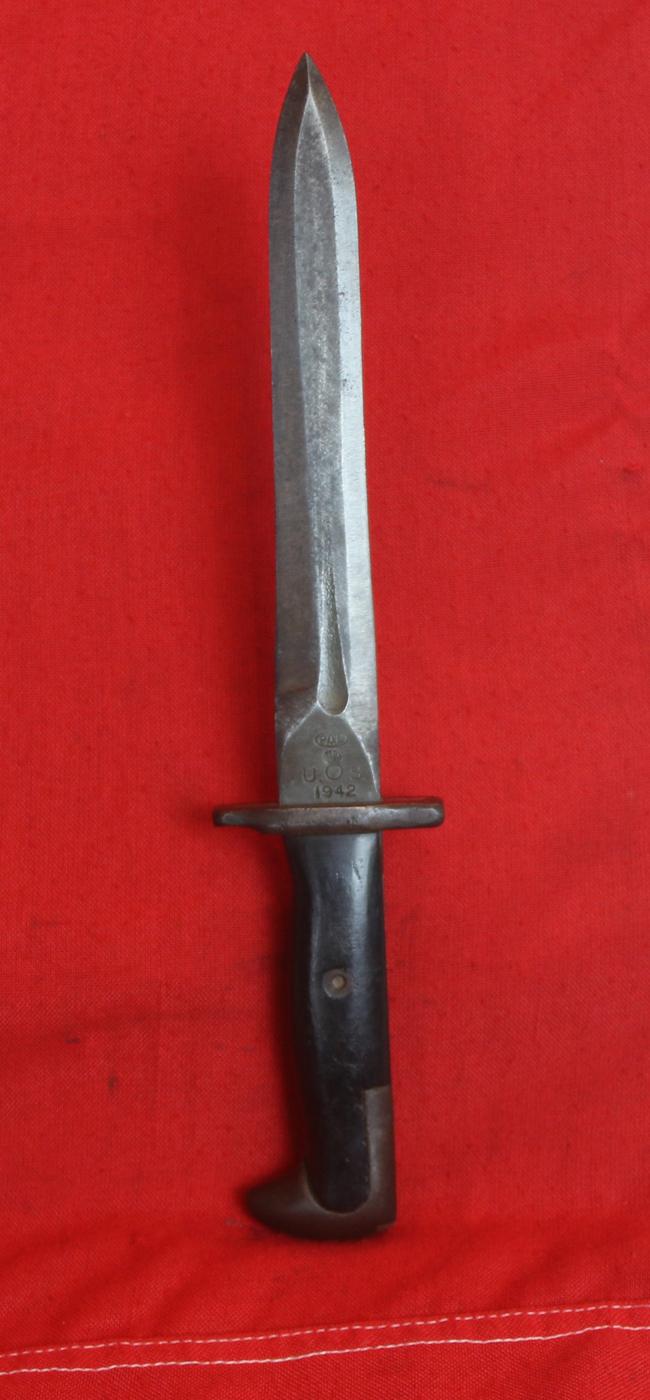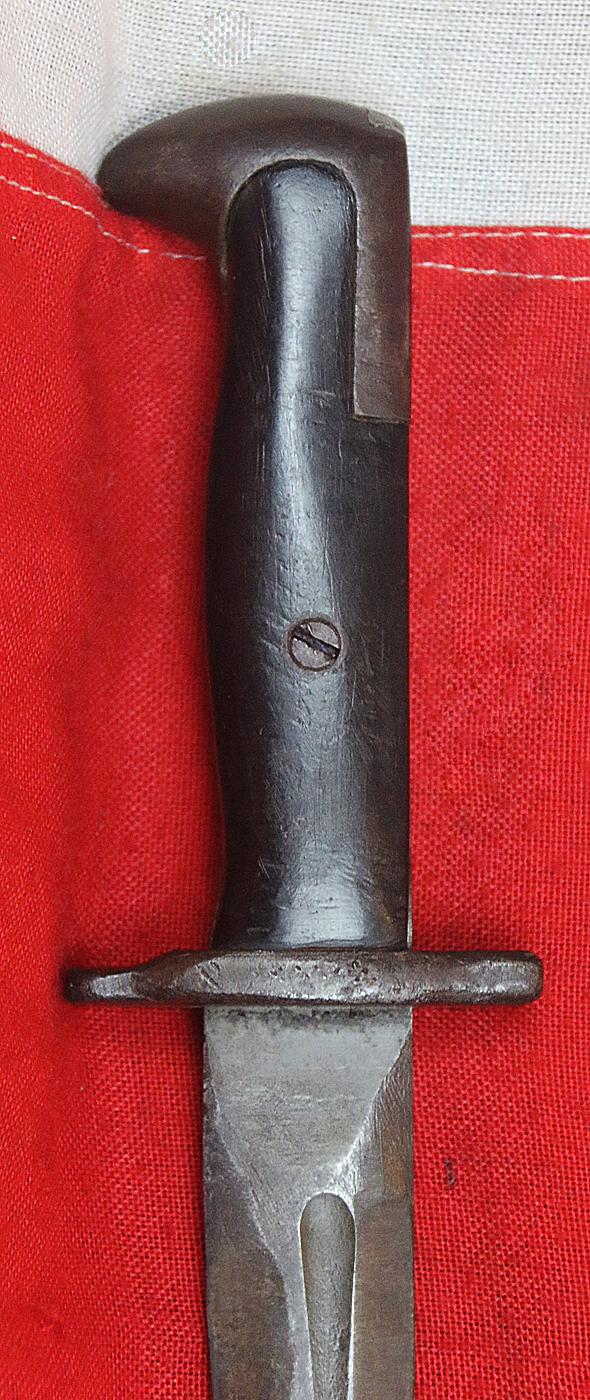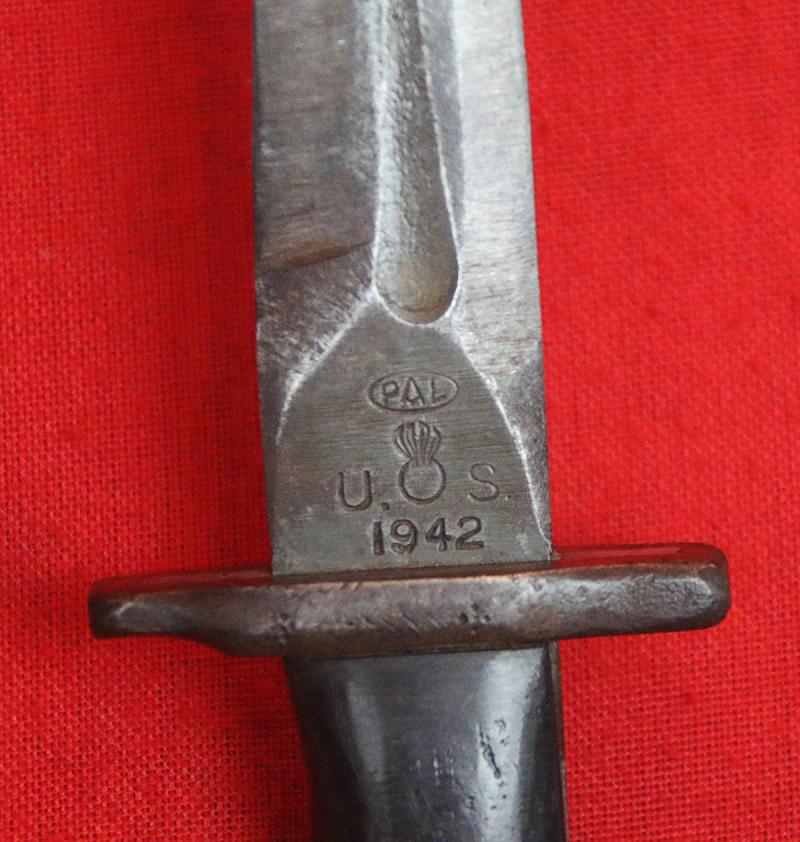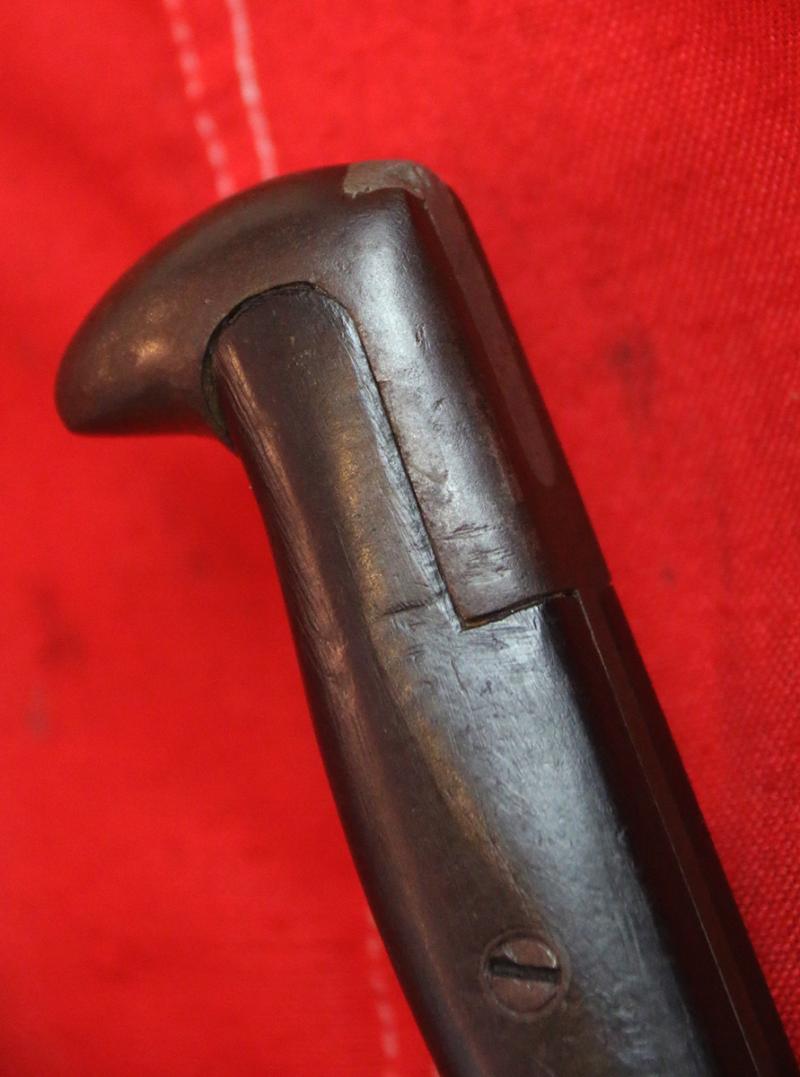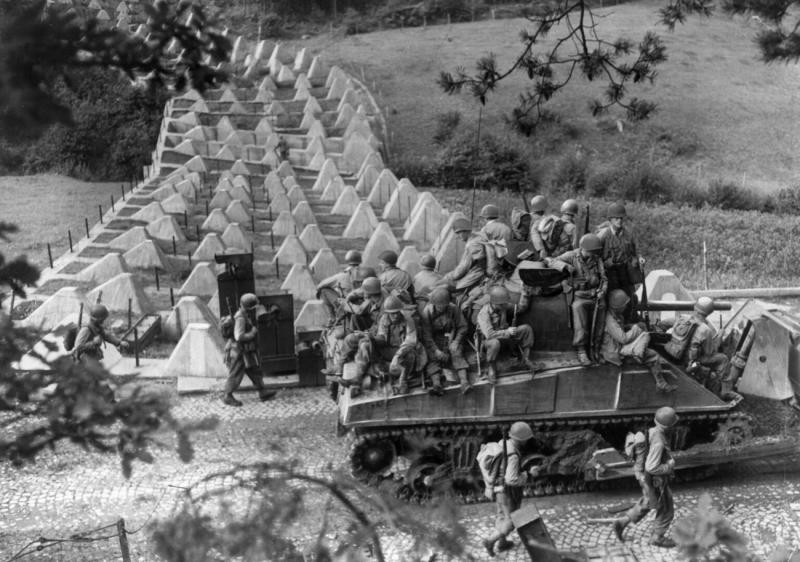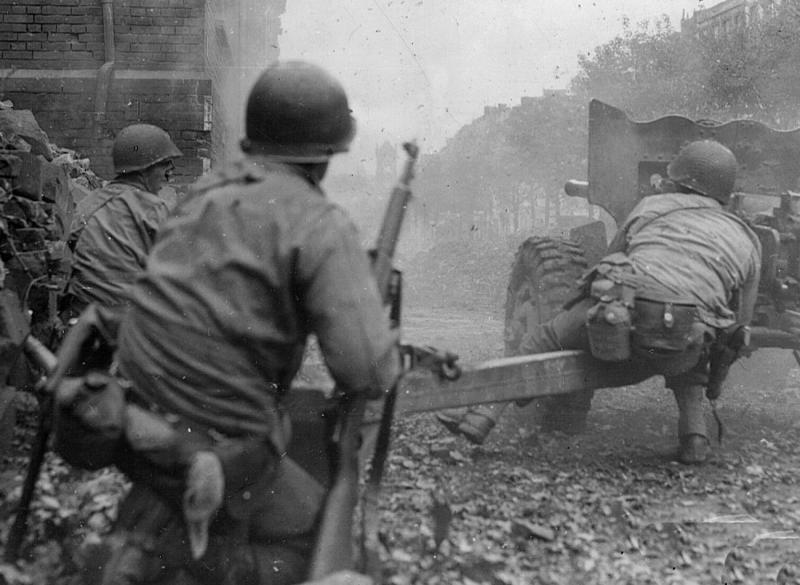A WW2 1942 US Army Issue M1 Garand Bayonet Fighting Knife Conversion, With a Stunning, Professionally Re-Ground and Re-Formed, Double Edge Blade
Metal filled slots and cut down quillons. This is a very professionally 'armourer made' WW2 adapted close combat fighting knife, certainly not an amateur adaption. Beautifully accomplished fighting knife conversion by a combatant-armourer who knew exactly what he was doing. A now razor sharp blade on both edges.
Maker marked, PAL Blade and Tool Co. a scarce maker as only 15% of Garand bayonets were manufactured by PAL for the war. early Ist type Shell and Flame stamp.
Apparently also used in the Battle of the Bulge, beginning on December 16th, which was one of the deadliest battles in World War II, with 19,000 US soldiers killed.
Used by a GI in 1944, the following very brief précis history, is of its service use.
1.Operation Overlord, code named D-Day, commences with the landing of 155,000 Allied troops on the beaches of Normandy in France.
2. The efforts to free France from Nazi occupation begin in June with the D-Day invasion of Normandy when Allied troops land on the beaches and start to make their way towards Paris.
3. More Allied troops land in southern France on August 15, and make their way towards the Rhine river.
4. As the Allies make their push towards Paris, French resistance fighters begin an uprising in Paris.
5. By August 25th, the Allies and Free French forces enter Paris and by the end of the month the French government is handed over to the Free French troops.
6. Before the end of the year France is liberated from Nazi control and occupation.
In December 1944, the Germans attempted to surprise the Allied armies as they travelled through the Ardennes. The German objective was to split the Allies up in a surprise attack. The battle began on December 16th and continued until late January of 1945. As the Allies regrouped to fight back against the German attack, the line of defense took on the shape of a bulge, hence the name "Battle of the Bulge." The Allies were caught off guard in the attack and tens of thousands of soldiers were lost in fierce fighting (estimated up to 100,000 casualties) during what was considered the bloodiest battle of World War II for the United States. Despite the losses the Allies were successful in neutralizing the German offensive and preventing Germany from recapturing Antwerp. As well as massively depleting German fuel and supply reserves.
After the German failed offensive, the war progressed to its successful conclusion in Germany in 1945. At which point the user of this knife returned to Britain.
Without doubt this is one of the best examples of a Garand fighting knife conversion we have ever seen. Its conversion from a single edged bayonet, to a double edge, reshaped and razor sharpened close combat bladed knife, along with the reformed hilt, is an exhibition of the finest, technical, engineering skill, especially considering it was accomplished in the field, and not in a regular peacetime engineering workshop.
It may indicate its conversion was by a wartime US, engineer trained, army airborne combatant, or, one with exceptional pre WW2 engineering skills. It may seem strange to one not familiar with the ‘feel’ of well executed hand crafted workmanship, but this knife is a joy to hold, and to simply admire its presence, quality, and to imagine the past history of its unknown wartime user. A feeling valued far more than its simple intrinsic worth. The feeling of a fleeting snippet of the personal history of a member of what many consider our finest generation.
11.25 inches long overall 7.5 inch blade
Code: 24824
225.00 GBP

